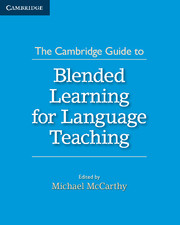Chapter 4 - The Flipped Classroom
Published online by Cambridge University Press: 22 September 2021
Summary
INTRODUCTION
Learning a foreign language presents diverse challenges for different people in varied contexts, and the reasons for learning a foreign language are as diverse as the ways individuals approach the tasks of learning new vocabulary, figuring out new grammar rules, listening, reading and speaking in a language other than their native language (Dörnyei, 2006, Ehrman et al., 2003). Research tells us that there is no single ‘best’ way to master a second language, other than perhaps to be born to mixed nationality parents and brought up in a totally bilingual environment. Nevertheless, there is research to suggest that it is possible to identify ‘optimal’ conditions for effective second language learning (Dixon et al., 2012), and among these conditions are the following:
• Learners interact in the target language with an authentic audience.
• Learners are involved in authentic tasks.
• Learners are exposed to and are encouraged to produce varied and creative language.
• Learners have opportunities to interact socially and negotiate meaning.
• Learners have enough time and feedback.
• Learners are guided to attend mindfully to the learning process.
• Learners work in an environment with an ideal stress/anxiety level.
• Learner autonomy is supported.
With these ‘optimal’ conditions in mind, we have to recognise that most second language learning still takes place in a face-to-face classroom context and language teachers the world over experience daily the challenge of creating, at least in part, these ‘optimal’ conditions. These teachers use a range of methods and approaches to introduce new language, and employ a variety of classroom management techniques to maximise learning opportunities (Walsh, 2006, and Chapter 3, this volume). But, the reality is such that time is limited in the classroom, and although teachers are well aware of the need to provide their students with opportunities to practise the language in different and varied contexts, this is sometimes just not feasible given timetabling constraints. Equally, the reality is such that the majority of students have relatively limited opportunities to actively engage in using the target language. Often surrounded by speakers of their own L1, students rarely have the opportunity to enter the world of the target language, despite teachers’ best efforts to introduce communicative, authentic language tasks into the classrooms.
- Type
- Chapter
- Information
- Publisher: Cambridge University PressPrint publication year: 2015
- 3
- Cited by



